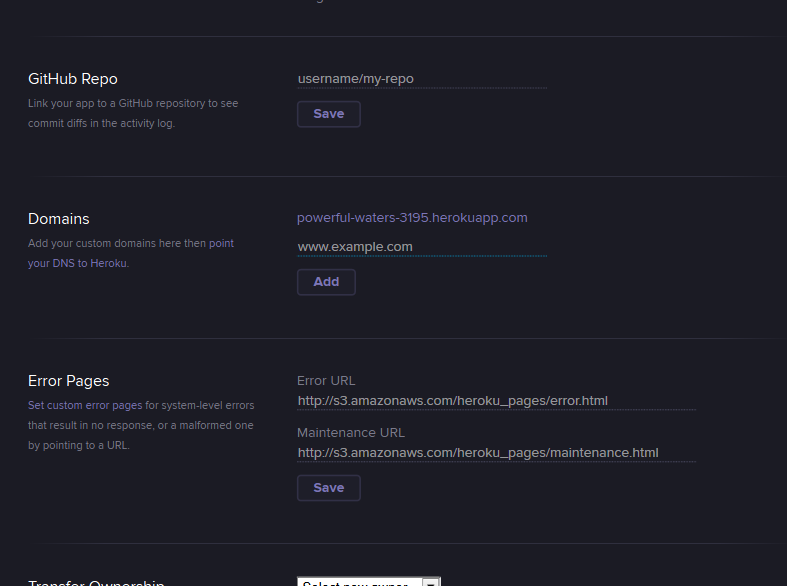From Zero to Heroku in Three Posts, Part 3
Well, we have come a long way, from learning what Heroku was, to hosting a site on it. Now all that is left, are a few minor details. Let’s start by changing that wacky URL to something a bit more appealing.
Domain Name
For this section, unless you are hording domain names like some sort of virtual pack-rat, you will likely have to spend some money. If you have a great aversion to this, fear not, skip to the next section for more freebies. Now that that is out of the way, go buy a domain name. Go on, I can wait, no need to rush this. Once that is done log into the Heroku website, click the name of your app, then click settings. Scroll down to the section that says domains.
On that line, enter the domain you own and click add. Now here is where my tutorial ends and Heroku’s documentation begins. Due to the sheer number of domain registrars, I must refer everyone to Heroku’s custom domain documentation and whatever documentation is published by your domain registrar.
Add-ons
Remember all of those add-ons from the first part? The post you surely read? Well now it is time to add one. This is not a necessity by any means, but it will be good to look through the add-ons and get a feel for how they work. We will start off easy with a simple log viewer. Log into the Heroku website, if you are not still there from the domain setup, click the name of your app, and this time click resources. On that page click Get Add-ons to be taken to the list of Heroku add-ons. You will likely have to click the login button in the top right if this is your first time here. Once that is taken care of, scroll down to the logging sections (section names are along the left hand side) and click Papertrail. I am going with Papertrail out of familiarity, not an endorsement. When I have tried out some of the others, maybe I will do a head-to-head comparison of them. As I was saying, click Papertrail and familiarize yourself with this layout. The add-on pages are set up with a general rundown of what the add-on does at the top and a breakdown of what level of service is offered at each pricing tier. Once you are ready, select the free tier and then select your app from the dropdown at the bottom, finally clicking the add button. Navigate back to your app and click the new Papertrail add-on at the bottom. Hurray, you now have a log viewer at your disposal. Not much use right now, but great if you start to see errors or start doing custom development.
 All quiet on the website front.
All quiet on the website front.
Conclusion
We have come to the end of the opening week, three post blitz. I hope you will stop by every week (I am thinking a Wednesday update schedule would work) to see what I write for all of you.
